
Thursday’s Children is a forthcoming anthology of personal essays. Co-edited by Adams Adeosun and Bello Damilare, it comes with an introduction by Kola Tubosun, and features fourteen writers, including its editors: Frances Ogamba, Timi Agboola Israel, Andanje Wobanda, Fareeda Abdulkareem, Atanda Obatolu, IfeOluwa Nihinlola, Munachim Amah, Kanyinsola Olorunnisola, Moyosore Orimoloye, Afope Ojo, Innocent Chizaram Ilo, and Ope Adedeji. Originally intended as a sequel to A Mosaic of Torn Places, edited by Adams Adeosun and released on our site, Thursday’s Children will be available for sale on Amazon.
Recently, Basit Jamiu, curator of Selves: An Afro Anthology of Creative Nonfiction, was invited to interview the contributors to Thursday’s Children on WhatsApp.
_________________________________________________________________________
Basit Jamiu:
Good morning, everyone. It is nice to be here with you all.
I read all the works in Thursday’s Children and I’m impressed with the level of depth that each writer contributed to the making of this dazzling and rewarding collection. Rereading all the pieces, I became harmonized with the sense of self in each of them. Each nonfiction—different in tone and experience—challenges the societal definition of shame while embracing vulnerability—the normalization of vulnerability. There are stories that are so relatable to my experience that I felt empowered and seen. I see creative nonfiction as archives, important archives, things we can always go back to when we want to know how a certain people or generation lived or made sense of their reality. I am curious to know what you intend to achieve when you set out to write creative nonfiction.
Atanda Obatolu:
For me, it was mostly expression. I know that’s very cliché, but there wasn’t a great agenda. Like I wrote in the caveat, the entire essay is a conflation of four entries I made in my journal. The journal started as a way for me to get things off my chest, and as a rule I put down every thought that came to my mind as I was writing—or tried—which is why there’s a lot of disjoint.
Kanyinsola Olorunnisola:
For me, it was a journey into that part of the self which has always been a mystery to me. It’s funny how you can be 20-something years old and still feel like you are a stranger to your own body, that there are things about yourself you will never truly know. I wanted to kick back against that idea and try to discover myself through writing. It is therapy, really.
Frances Ogamba:
Thanks, Basit. Thursday’s Children was my first attempt at Creative Nonfiction. It was a way of giving voice to my past. I have done two more nonfiction pieces, thanks to Thursday’s Children. CNF helps me interact with self, with shame and pain, and with everything beautiful and ugly I have had to deal with.
Timi Israel Agboola:
Hello everyone. Thank you, Basit and Adeosun.
I really didn’t set out to achieve a particular concrete goal. I have always thought that, along the lines of what you said, writing personal nonfiction is literally the same thing as pouring your heart out to a listening ear. And what better listening ear than a blank page which you butter with life?
Moyosore Orimoloye:
In Regarding the Pain of Others, Sontag’s book about observing others, especially victims of war and other mishaps, from behind camera lens, she posits that “to photograph is to frame and to frame is to exclude.” The photographer can carefully exclude, from his photographs, whatever he needs to, in order to push his narrative.
I think the same goes for writing prose; since the infinite sentence is either impossible or undesirable, to write is to frame and to frame is to exclude. In writing nonfiction, I have a general idea or a narrative I want to push and then set out to chisel the entropy of available information appropriately. In writing, as I did in “On the Disappearance of Things,” about how things are getting lost to memory, I willfully excluded the ways and instances in which we are remembering.
Innocent Chizaram Ilo:
Memories have always fascinated me. I have always kept diaries on and off at some points in my life. My writing Creative Nonfiction comes from my obsession with documenting memories and experiences. By documenting these memories and experiences, I sort of relive the past events and have conversations with my past selves. Also, for someone who writes speculative fiction, CNF helps me stay in touch with my immediate reality.
Andanje Wobanda:
I had no deep intention when I wrote my piece. I just remember thinking “Why not?” Hopefully, in time I will have a more deliberate intent than “Why not?”
IfeOluwa Nihinlola:
I’m not sure how to delineate what is creative about my nonfiction that makes it worthy of the label “creative nonfiction,” and as far as intentions go, it’s difficult to ascribe one to writing “creative nonfiction” that is different from every other kind of writing I do. But if I focus on my work in this anthology, then I guess the question is why I write essays. In writing essays, whether they’re personal or critical or in that no-mans-land of writing where nothing is easily defined, my intention is to think through something—an event, a memory, a piece of art—and by doing that on the page discover something I would otherwise not outside the rigour an essay demands.
Adams Adeosun:
My essay in Thursday’s Children is titled “Catharsis.” And it is an attempt to process events in my life. I had been in a position which seemed different from my person and left me heavy with guilt. So I wanted to trace the process by which I became this person. It was also an attempt to relieve myself of this feeling of guilt.
Fareeda Abdulkareem:
Can’t quite remember the inspiration for my piece except I wanted to start engaging more critically with things that weren’t adjacent to what African literature was presented as. Also I really love film, and this piece was one of my first attempts to articulate my interest and belief in it.
Dami Lare:
The way I see it, writing that particular text, like every premise, makes recourse to the place of complementarity, of thought, actions, events—the within and without. Nothing is isolated. Everything I believe is connected, and the human mind is a pattern-seeking one. Every essay I write interrogates this connectedness of seemingly random things, and seeks to deconstruct the relation. That I believe is the why of the essay. It answers the what, too
Basit Jamiu:
From all the responses, I am able to solidify my belief that whatever intention one brings into creative nonfiction is valid. I think one of the luxuries of creative nonfiction is that one can be limitless with form, the option of being highly experimental like fiction. In a place where reportage and academic essays pride on pigeonholing with static and rigid rules, creative nonfiction is a welcoming home. What do you think about highly experimental creative nonfiction works or nonfiction works that seem to explore new forms to tell our truths? How important are they?
Timi Israel Agboola:
This is an important question for me. First of all, it needs to be said that every form of expression has a certain routine that works well and has been adopted by many over time until it became tradition. It is a very human thing to do: patterns help us interpret and navigate life. As a result, finding new ways to go about things brings derision and ridicule: why are you leaving the proven for the unproven? Yet innovation and experimentation are vital to the continued progress of all kinds of interactive systems. This is what provides the drive and momentum that enables us to overcome obstacles.
When I first started writing down my piece, I felt unjustified. Why should anyone want to read anything about my family? Was it important they did? Why was I telling them? Fiction never has this problem. Fiction justifies itself. It never happened and you are escaping into a fantasy. Personal and creative nonfiction struggles to find justification, especially when nobody is invested in your story. So why write it, ostensibly, for eyes that don’t know you?
In this struggle for justification, I discovered that the flat form is elitist, smug and self-imbued with its own importance, its own standing in tradition. A young, coy mouse of a writer feels unwelcome and undeserving. So I broke out with the first draft in pursuit of justification: I interviewed myself.
Experimental works of nonfiction, especially the personal, are, I must say, necessary and natural. A person’s unique story won’t find it easy to fit into preconceived forms, into broad stereotypes and general traditions. This is why the most experimental writings of such are usually whirlwinds of emotion. Your story struggles to fit and necessity is the mother of invention. It’s then crucial for our stories to be presented as what they are: unconventional.
Moyosore Orimoloye:
Just how experimental can writing, especially prose, get? Isn’t it always words, set like bricks, after and before other words? Styles, too, are regularly abandoned and, just as regularly, returned to. The only possible experiment, I think, is giving different people (who are unique bags of memory) the pen.
Dami Lare:
The province of personal truth is a dangerous terrain, for the other who, of course, is the non-agentive and decentralized occupant of a narrative (and I use this in the general sense in which everything is a narrative.) A narrative in which he forcefully participates and is made to perform. The nucleus of the nonfiction I believe is couched in a frame whose utility is the provocation of comments on those things that matter to us. But how truthful are these submissions when they are offerings of a single entity? To counter the hegemony of life, I believe, is to tell a personal tale . . . to activate the passive self. But to what extent is this a disservice to others for whom the self has assumed author, character, and narrator? As a result of this possibility of perpetuating the single story when the program is to rid ourselves of it—a case I like to think of as (and paraphrasing Orwell) an effect becoming a cause, bolstering the original cause and producing the same effect in an intensified form and indefinitely—we can only hope to be creative with the supposedly true stories we tell. I believe any true story can be told by anyone, hence the necessity of innovation with regard to manner; the scaffolds of any nonfictional piece should betray its creative bent. This way, the burden of truth is at the very least shared across the pillars of that piece, and the processes of ideation, contemplation, and execution are at once revealed, intimating the reader that this text is the product of a mind that seeks clarity, not one that seeks to recruit or induce sleep. Highly experimental nonfiction pieces are favorites. I love the personal essay, and I favor essays that present an idea and seek to examine it with life occurrences, not engineer itself to narrate the details of waking to sleeping.
Atanda Obatolu:
This is a very controversial question, and I will proceed carefully.
Art is expression. If poetry is the purest form of literary expression, then I think CNF may come next. And expression is a really curious thing, because for me it’s synonymous to birthing. John Berger talks about how, when he writes, what he’s really doing is trying to recreate something he feels, which is “almost unsayable,” in words. He also says that in the end the words are never close enough to their non-verbal model. I find this very interesting, because I’ve always thought words are not sufficient for thought. Perhaps because words are a sort of frame. They are rigid, defining, and so constricting.
I think that in other to express fully, we have to transcend words (music, for example, is far more efficacious in my opinion). But because we are writers and words are our tool, then we have to make them more fluid. We have to experiment. Conventions, rules, acceptable notions of style constrict thought, and sometimes are misleading. For example, in my essay in Thursday’s Children, there are sentences which run on for many lines without punctuation, because at that point, it was more important to me to capture the precise flow of thoughts in my mind than to conform to rules about sentences and punctuation. Do we think in beautiful, well-punctuated sentences?
Anyway, this is my long-winded way of saying that experimenting is not just beautiful or brilliant, it is absolutely important to the sustenance of our form.
Yet experimental literature is a dicey terrain. How far are we supposed to go? How radically can we break away from convention? In experimenting, I think, there’s always the risk of alienating readers. (Perhaps this is an unfair bias on my part towards readers?) Binyavanga’s memoir, One Day I Will Write About This Place, for example, is a very experimental work, as far as language goes, and also one I’ve never quite been able to get into. (I consider this a personal failure, by the way. I don’t blame anyone for it.)
What I’m saying is, in the end, we are trying to communicate. (Why write when no one will read?) And the question I ask myself is, when it comes down to it, when I have to choose between expressing adequately (which is synonymous here to experimenting) and communicating, what will that choice be? Is it justified to abandon communicating in favour of experimenting?
Kanyinsola Olorunninsola:
The personal essay is an exploration of the weird, unusual aspects of your distinctive reality. It is the documentation of a joy or grief or pain or what-have-you that is yours and yours alone. Even if other people have similar experiences, no one can tell your story like you do. It bears your individual touch of madness. Why, then, should the delivery not be unique to your personal spirit? Why, then, should you not tell your truth in a way that defies convention, saying fuck-you to the strictures and overt diplomacy of the other forms? Doing otherwise seems to me like a censorship of your voice. Or, perhaps, a censorship of the soul—if we are being melodramatic.
Innocent Chizaram Ilo:
I think CNF, like other forms of writing, should be boundless in its execution. I’m particularly intrigued by CNF that seeks to document human experiences in new forms: lists, algorithms, computer programs. Our experiences are constantly in a state of flux so why shouldn’t its documentation be constantly evolving?
IfeOluwa Nihinlola:
Again, the insistence on a difference in approaches between fiction and nonfiction, or what counts as creative nonfiction presents a hang-up for me here. I don’t think essays are experimental “like fiction.” I think all good writing seeks to be experimental, and this is either at the level of language, form, or even content. The pioneers of what is now called “creative nonfiction” were works of reportage, and I’ve seen academic papers that make for such great reading. I, too, find value in experimentation, especially when I seek to break out of ruts or expand my capacity as a writer, but that value is not one I think about when I write essays. For me, like for Vivian Gornick, lucidity is the goal in essays. Whatever form or style I adopt in framing my narrative, I want to be as clear—not to be conflated with simple—as possible. If experimentation gets in the way of that, then I’ve failed.
Adams Adeosun:
I often find myself wondering what counts as experimental. Is it a question of structure or style, context or content? The vast majority of literatures considered experimental are those that suspend one form for another as is the case in Stephen Chbosky’s novel The Perks of Being a Wallflower, which merely borrows the form of informal letters. There’s also Namwali Serpell’s controversial story, “Account,” on Enkare Review, which favours the rigid structure of a statement of account. But the most striking examples of experimentation I have encountered are rooted in language. Linguistic experimentation is a trademark of Binyavanga Wainaina, the glory of Fiston Mujila’s novel Tram 83, and a peculiar signature of the darling Helen Oyeyemi. When you subvert a form for another, I see the aesthetic shift, but the context almost always creates a counter effect. And when prose is the culprit, the impression is a sense of the author’s elevated consciousness. Everything is implicated by every other thing. And so when I read a piece considered experimental, especially in the CNF genre since that is more affected by the patterns replete in our reality, I am pushed to think, “Really, could this have been done any other way?”
Andanje Wobanda:
I like to think even the most rigid genres were once deemed experimental (before the human need to box things happened). We are at a point where we haven’t started to box CNF yet (or too much?), so why not take advantage of that? If it is important to leave structure and narrative at the discretion or artistry of the writer then why should we question the importance of experimentation?
Basit Jamiu:
I find all the views on experimentation very moving because they appeal to different ways of looking at it. Last year, a PhD student working on her thesis sent me so many questions as the curator of Selves: An Afro Anthology of Creative Nonfiction, and I will like to share the following question with you. It will be nice to hear your thoughts on it too:
“In the introduction to Selves, Otosirieze Obi-Young picks up Ellah Wakatama’s statement that creative nonfiction in Africa is ‘in a germinal phase’. Although he largely agrees with her statement, describing them as a ‘safe observation’, particularly since creative nonfiction in comparison to more ‘stable literary traditions’— fiction and poetry—is still growing, he also finds himself in agreement with Kwanele Sosibo, who concludes in his Mail & Guardian review of Safe House that ‘creative nonfiction is past the germinal phase’ (2018, 4), by pointing to a promising development within the genre: range. What are your views on the development of nonfiction writing, particularly with regards to Nigeria’s literary scene?”
Innocent Chizaram Ilo:
I think CNF can develop in the same ways other genres develop: provision of more publication opportunities like this, workshops, and literary festivals.
Dami Lare:
Nonfiction writing, as specified, is past the germinal stage, if there is indeed anything like that. I wouldn’t even know where to begin on that. The real matter is the mode of dispersal or measures put in place to sustain the continuity, urgency, and forcefulness of that tradition in the post-modern age. The genre pales in comparison to the twin tradition of fiction and poetry because of the system of reward that has been guaranteed for endeavors in them. More outlets like this, projects as well as commissions, and incentives by way of prizes, workshops, and generally what Innocent said would suffice to push nonfiction to its deserved place. Members of the country’s literary scene invested in nonfiction should push its boundaries to applaudable heights. Which incites one to wonder why they aren’t.
Timi Israel Agboola:
I agree that creative nonfiction is beyond the germinal phase in “Africa”. It is maturing, slowly, to that vital point where it gets to surge to the forefront and take its rightful place in the canon. More and more spaces for creative nonfiction are opening up while more and more writers are writing their stories, stories of other people, stories about places, stories about memories, stories centered on human interaction, stories about things that have to be told. I hope Thursday’s Children will play a strong role in prodding the avalanche to come.
Basit Jamiu:
My team and I created the Afro Anthology Series which is currently the only platform that exclusively caters for only creative nonfiction in Africa, and we hope to release more anthologies with quality that matches, or transcends, that of Selves. My hope for creative nonfiction in Africa is that it gets the same attention that its two sisters—fiction and poetry—get all the time. There has been a lot of progress towards this. The opening piece in Safe House, “Fugee” by Hawa Jande Golakai, won the inaugural Brittle Paper Award for Creative Nonfiction in 2017. And just like with Safe House, the opening piece in Selves, “The Miseducation of Gratitude” by Sibongile Fisher, won the 2018 Brittle Paper Award for Creative Nonfiction too. I was particularly surprised and deeply moved with the level of praise and attention that Selves received from readers in the continent and beyond, which in many ways shows that CNF is becoming an attractive genre like fiction in Africa. It is gladdening to see the level of quality in Thursday’s Children. We need more brilliant creative nonfiction by African writers and I believe that with more quality books like Safe House and Selves, Teju Cole’s Blindspot, Emmanuel Iduma’s A Stranger’s Pose, and now Thursday’s Children, the future looks bright and promising.
Thursday’s Children is an important contribution to the ongoing development of creative nonfiction in Africa and I hope there is more of this dazzling magic in the future. Thank you all for joining me in this conversation. Your responses are very insightful.
_________________________________________________________________________


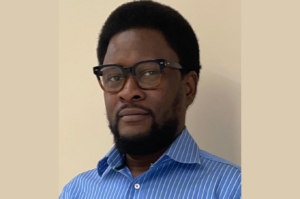
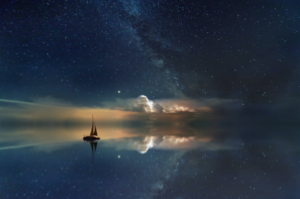
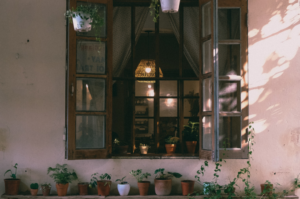

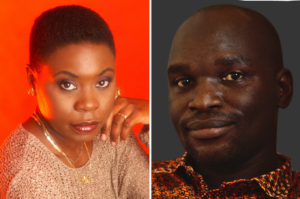
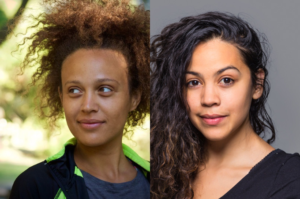

Clinton Mabilo January 21, 2019 16:17
Can't wait to read this one special shout out to Agboola Timi Israel. You really inspire me